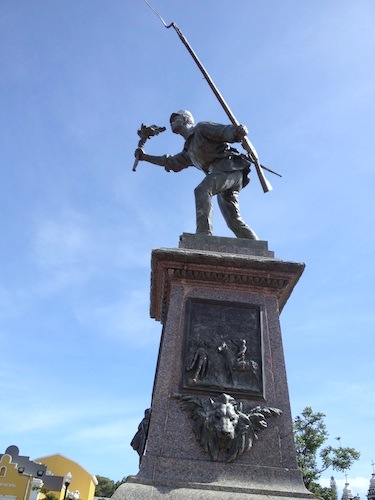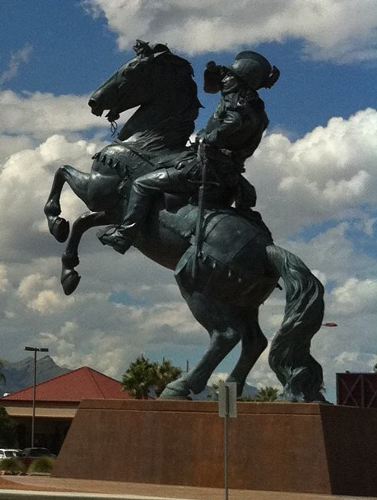History Is Open to Interpretation
Just outside the town of Oñate, New Mexico, there is a statue of Don Juan de Oñate. According to the stories told by locals, this fellow wasn’t exactly a nice guy. He was known for, among other things, cutting the feet off the local Acoma Indians.
So when a statue was put up depicting the explorer near the town of Oñate, someone cut off his right foot and left a note saying “fair is fair.”
That truly New Mexico story has always amused me greatly. Mostly because so many people will quote history as though it is gospel truth. History books will say that Oñate was a great explorer and settler of many towns. A founding father, I guess, but not everyone agrees.
History depends on who is telling it.
I was reminded of this bit of statue-based controversy when I visited the town of Alajuela, which is Costa Rica’s second largest city. We stopped off there on the way to visit the Poas Volcano.
My friend and coworker who took me for the ride was raised in Alajuela, so she wanted to show me the town and the beautiful central park and Catholic church in the plaza.
We also visited the nearby park created to honor Juan Santamaria, Costa Rica’s national hero.
My friend is a very proud Costa Rican, so she walked me over to the statue so I could see.
Here it is:

As we gazed up at the statue, my friend laughed.
“It’s wrong,” she said.
As I’d spent the week trying to traverse English and Spanish, I thought I’d misheard her. So I said “what?”
She laughed harder. “The statue. It’s wrong.”
“What do you mean?”
So she told me the story as she’d learned in school. Roughly that Juan Santamaria had set fire to a building containing soldiers from Nicaragua, and by doing so (and dying in the act) it allowed Costa Rica to gain an advantage and win the battle.
However, she continued, Santamaria was only a boy, not a man, as depicted in the statue. He wasn’t actually a soldier, as depicted. And notoriously, he was unarmed when he went forward to set fire to the hotel where the other soldiers were holed up.
The only accurate part of the statue is the torch.
Other than that, it’s all wrong.
“But we love it anyway,” she laughed. “He’s our hero.”
History is in the eye of the beholder, but national pride is enduring.
Photo Copyright 2012, Karen Fayeth, and subject to the Creative Commons license in the far right corner of this page. Taken with an iPhone 4s and the Camera+ app.
